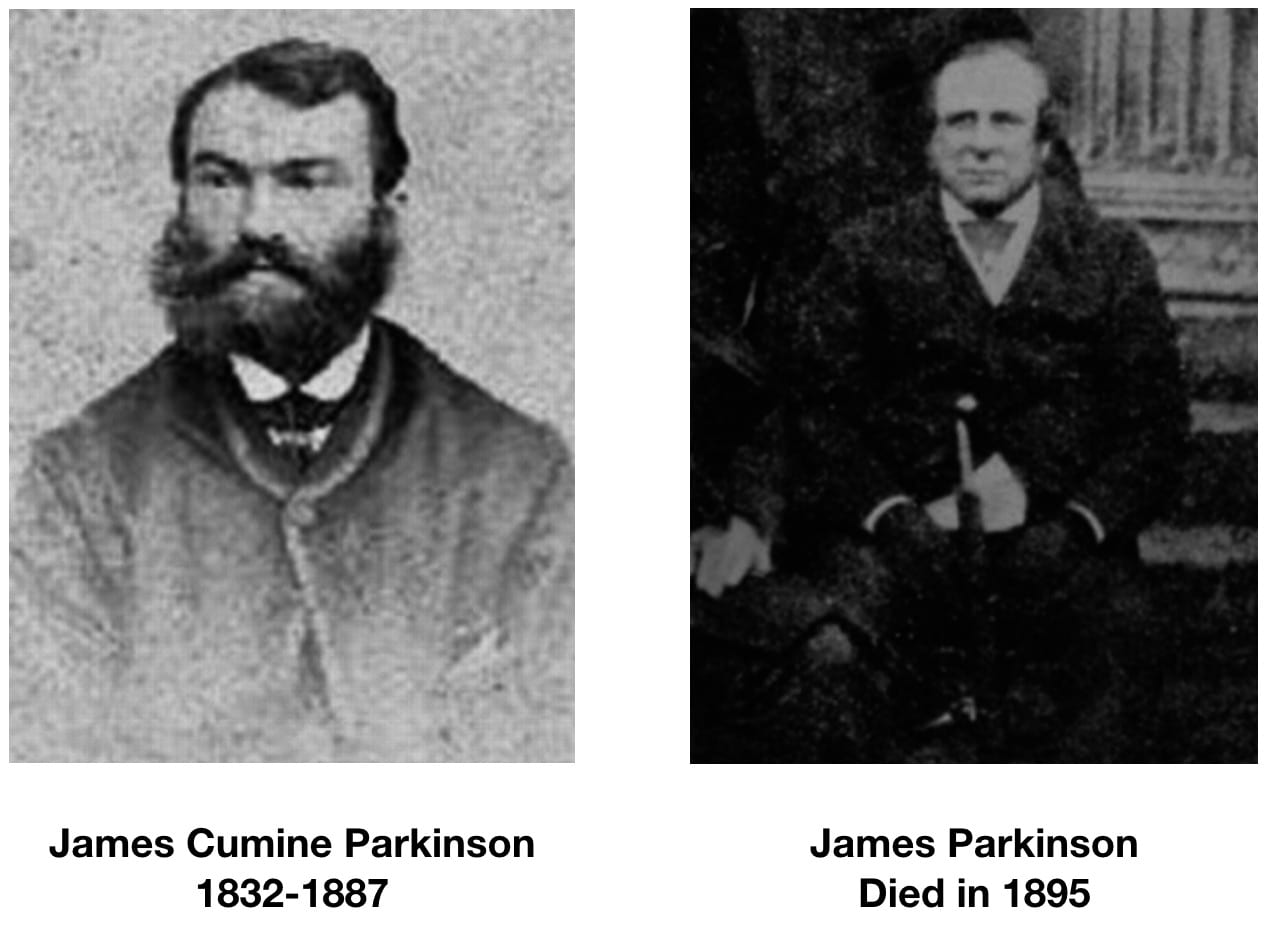James Parkinson
James Parkinson (1755-1824) was an English surgeon, apothecary, palaeontologist, geologist and political activist.
Most famous for his 1817 masterpiece An Essay on the Shaking Palsy in which he referred to a disease as paralysis agitans. This would later be coined Parkinson’s disease by Jean-Martin Charcot in 1877.
In addition to taking over his father’s medical practice in Hoxton, London he was also a doctor for more than twenty-five years at Holly House, a private mental asylum.
Biography
- Born April 11, 1755 in London to John Parkinson, an apothecary and surgeon (a general practitioner in modern terms). This day is now known as World Parkinson’s Day
- 1783 – married Mary Dale with whom he had six children
- 1784 – qualified as a surgeon approved by the City of London Corporation
- 1787 – elected a fellow of the Medical Society of London
- 1794 – accused of being part of the Popgun plot – an unsuccessful plan to assassinate King George III. He was found innocent.
- 1817 – published his most notable work: An Essay on the Shaking Palsy
- Died December 21, 1824 after a stroke
Medical Eponyms
Parkinson disease (1817)
World Parkinson’s Day (April 11)
Dr James Parkinson Tulip (1980) Red and white tulip developed by JWS Van der Wereld, a Dutch horticulturalist who had Parkinson disease. The tulip has now become the official symbol within the Parkinson’s community.
Involuntary tremulous motion, with lessened muscular power, in parts not in action and even when supported; with a propensity to bend the trunk forwards, and to pass from a walking to a running pace: the senses and intellects being uninjured.
Controversies
The images of James Parkinson on the internet, are in all likelihood not the James Parkinson of Parkinson disease. Parkinson died in 1824, The first photograph made in a camera was taken in 1826 by Joseph Nicéphore Niépce

Extra-medical Interests
Political
Parkinson was a strong supporter of the principles of the French Revolution and adopted quite radical ideology. He published many pamphlets that called for the reform of Parliament under the name “Old Hubert”. Due to associations with several secret political associations he was investigated for being part of a plot to assassinate King George III.
Palaeontology and Geology
Towards the end of his career his interest transitioned from medicine to geology and palaeontology. He eventually owned one of the most important collections of fossils in Britain. His name is also commerorated in several fossil organisms such as the snail Rostellaria parkinsoni and an ammonite called Parkinsonia parkinsoni
- 1804 – Organic Remains of a Former World. Volumes I, II (1808) and III (1811) respectively
- 1822 – Outlines of Oryctology: an Introduction to the Study of Fossil Organic Remains, especially of those found in British Strata
Medical Publications
- Parkinson J. The chemical pocket-book; or Memoranda chemica. 1801
- Parkinson J. Hints for the improvement of trusses; intended to render their use less inconvenient. 1802
- Parkinson J. The villager’s friend and physician. 1803
- Parkinson J. Observations on the nature and cure of gout; on nodes of the joints; and on the influence of certain articles of diet, in gout, rheumatism, and gravel. London 1805
- Parkinson J. Dangerous sports. A tale. 1807
- Parkinson J. Medical admonitions to families. Respecting the preservation of health, and the treatment of the sick. 1807
- Parkinson J. Organic remains of a former world: An examination of the mineralized remains of the vegetables and animals of the antediluvian world; generally termed extraneous fossils. 1808 [Volume II] [Volume III]
- Parkinson J. Mad-houses : observations on the Act for regulating mad-houses. 1811
- Parkinson J, Parkinson J. Case of diseased appendix vermiformis. Medico-chirurgical transactions. 1812;3:57. [assisted his son, John Parkinson in the first described case of appendicitis in English and the first time perforation had been found to be the cause of death]
- Parkinson J. An Essay on the Shaking Palsy. London 1817 [Parkinson disease]
References
Biography
- Gardner-Thorpe C. James Parkinson (1755-1824). J Neurol. 2010 Mar;257(3):492-3.
- Stott SR. The wrong James Parkinson. Pract Neurol. 2015 Apr;15(2):148
- Fresquet JL. James Parkinson. Historia de la Medicina.
Eponymous terms
- Parkinson J. An essay on the shaking palsy. 1817. J Neuropsychiatry Clin Neurosci. 2002 Spring;14(2):223-36; discussion 222.
- Lees AJ. Unresolved issues relating to the shaking palsy on the celebration of James Parkinson’s 250th birthday. Mov Disord. 2007 Sep;22 Suppl 17:S327-34.
- Lawden M. Parkinson’s facies. Pract Neurol. 2011 Oct;11(5):316.
Eponym
the person behind the name
Emergency Medicine Trainee based in Perth, Western Australia. Keen interest in ultrasound, rural health and water-based activities.
BA MA (Oxon) MBChB (Edin) FACEM FFSEM. Emergency physician, Sir Charles Gairdner Hospital. Passion for rugby; medical history; medical education; and asynchronous learning #FOAMed evangelist. Co-founder and CTO of Life in the Fast lane | On Call: Principles and Protocol 4e| Eponyms | Books |

Thank you for your dedication to keeping all of this remarkable being’s works, intact and unfilitered.